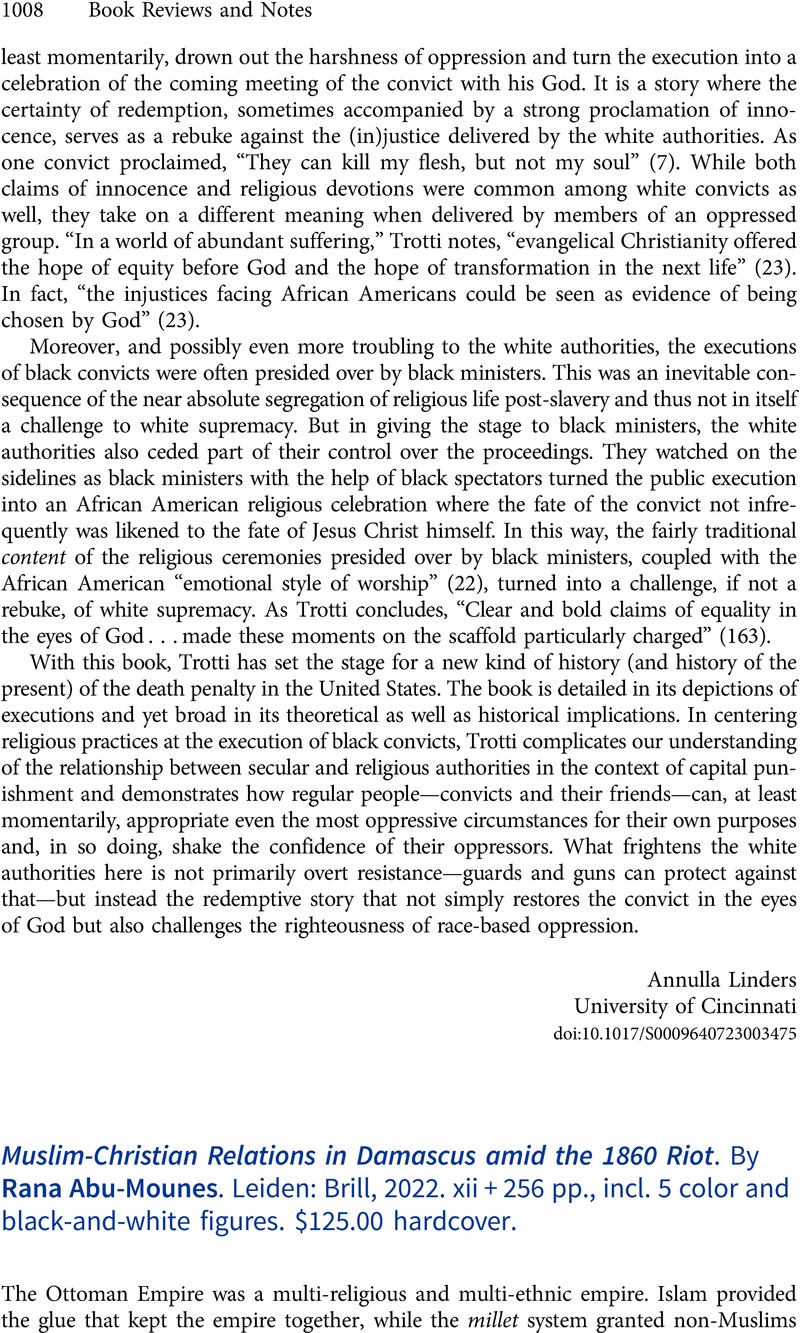No CrossRef data available.
Article contents
Muslim-Christian Relations in Damascus amid the 1860 Riot. By Rana Abu-Mounes. Leiden: Brill, 2022. xii + 256 pp., incl. 5 color and black-and-white figures. $125.00 hardcover.
Review products
Muslim-Christian Relations in Damascus amid the 1860 Riot. By Rana Abu-Mounes. Leiden: Brill, 2022. xii + 256 pp., incl. 5 color and black-and-white figures. $125.00 hardcover.
Published online by Cambridge University Press: 19 March 2024
Abstract
An abstract is not available for this content so a preview has been provided. Please use the Get access link above for information on how to access this content.

- Type
- Book Reviews and Notes
- Information
- Copyright
- Copyright © The Author(s), 2024. Published by Cambridge University Press on behalf of American Society of Church History


